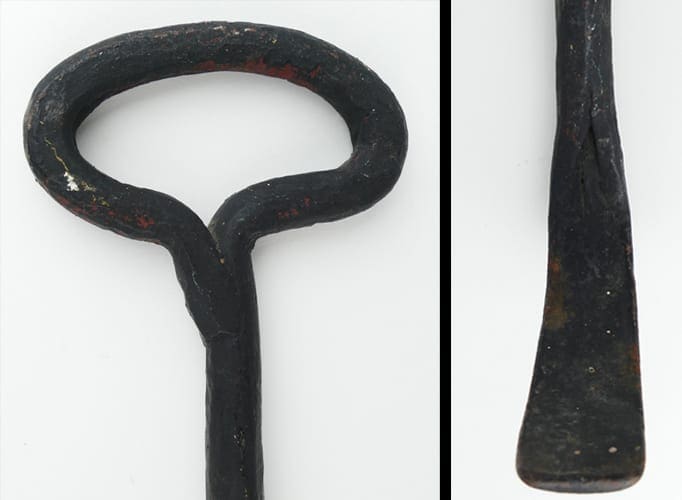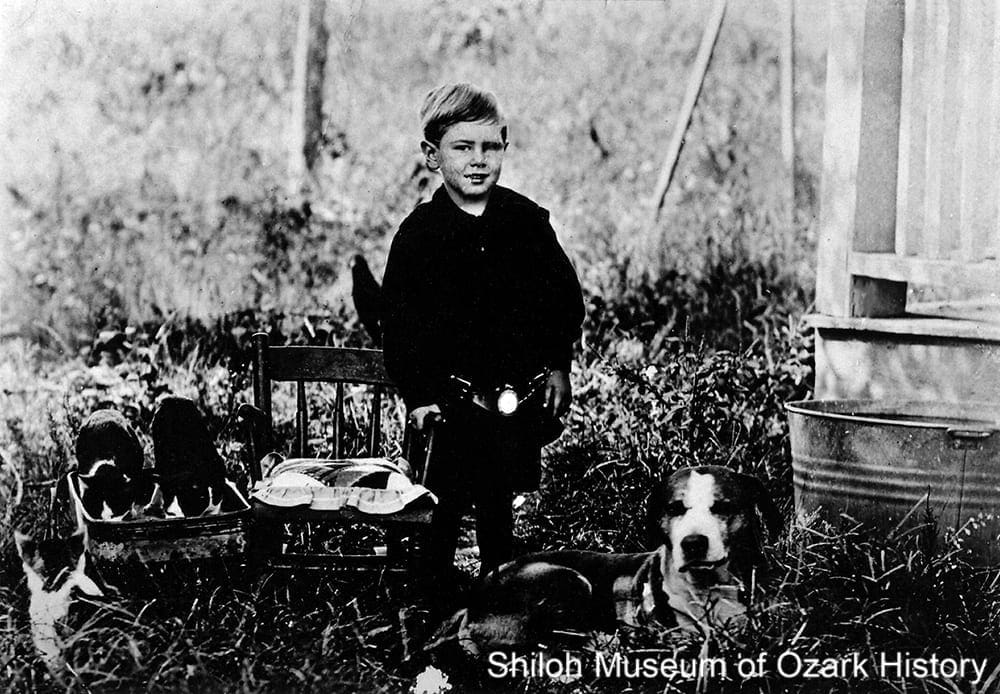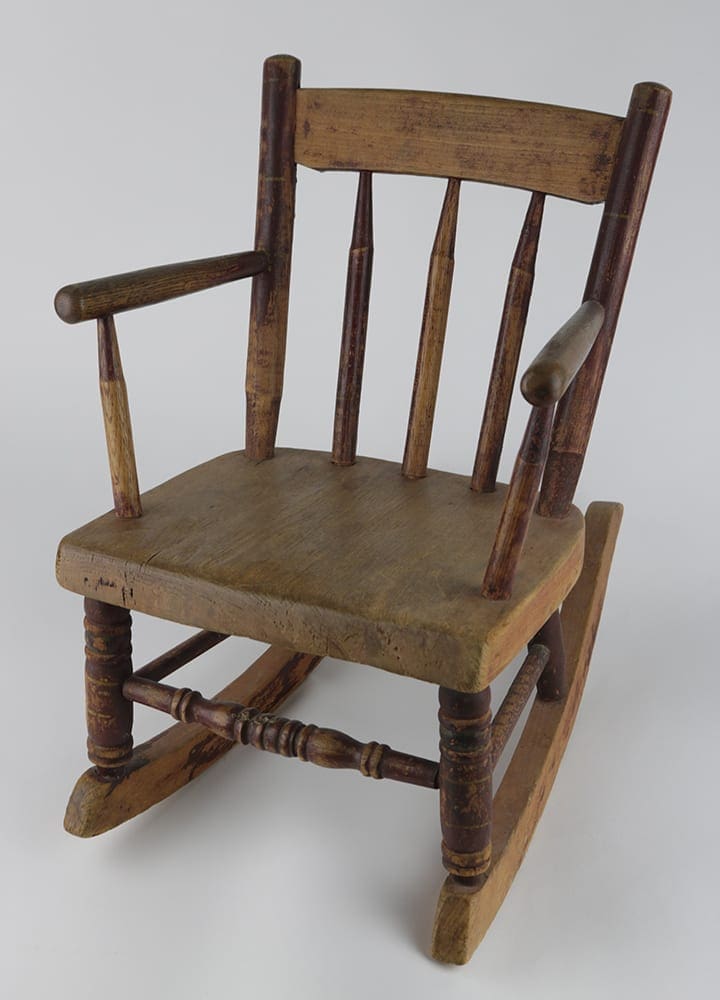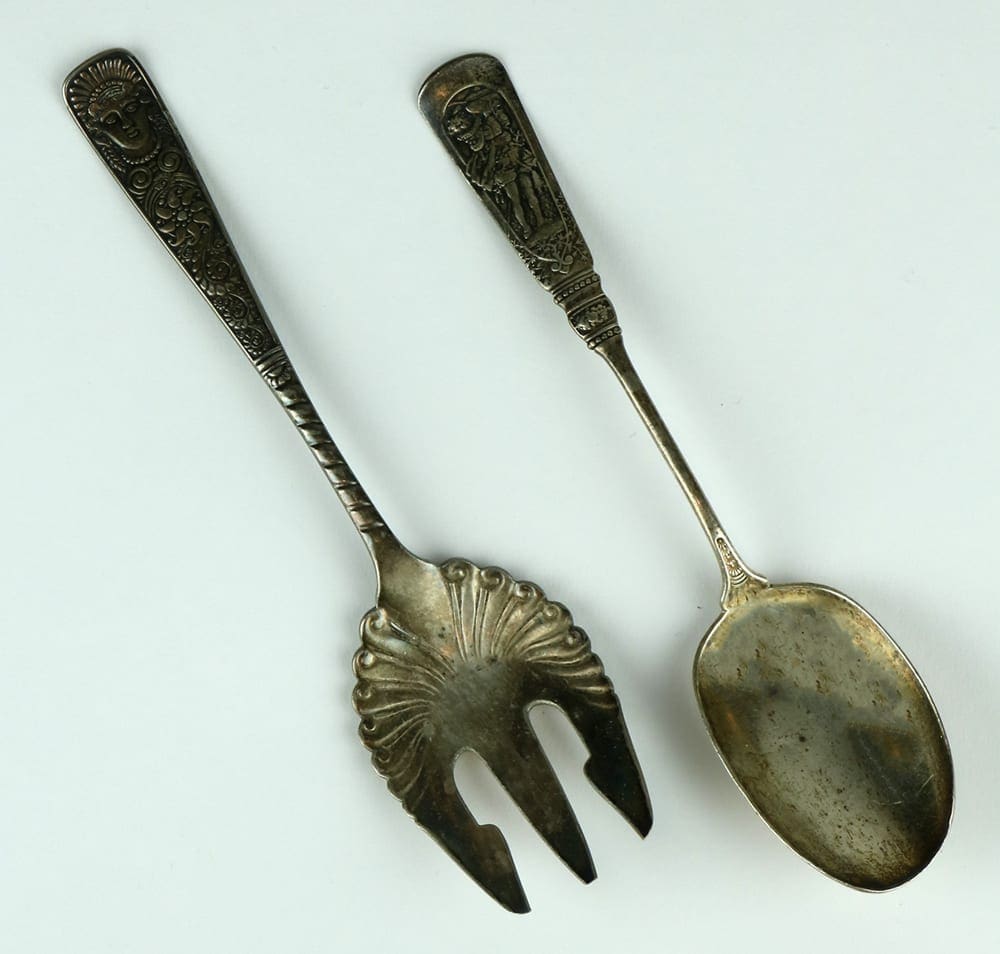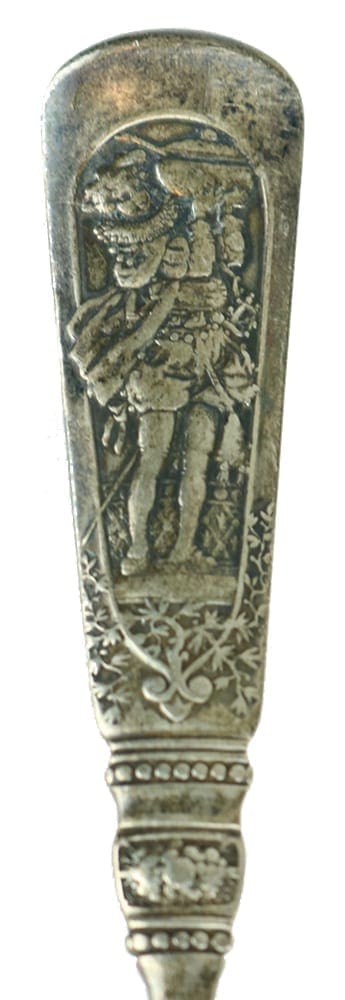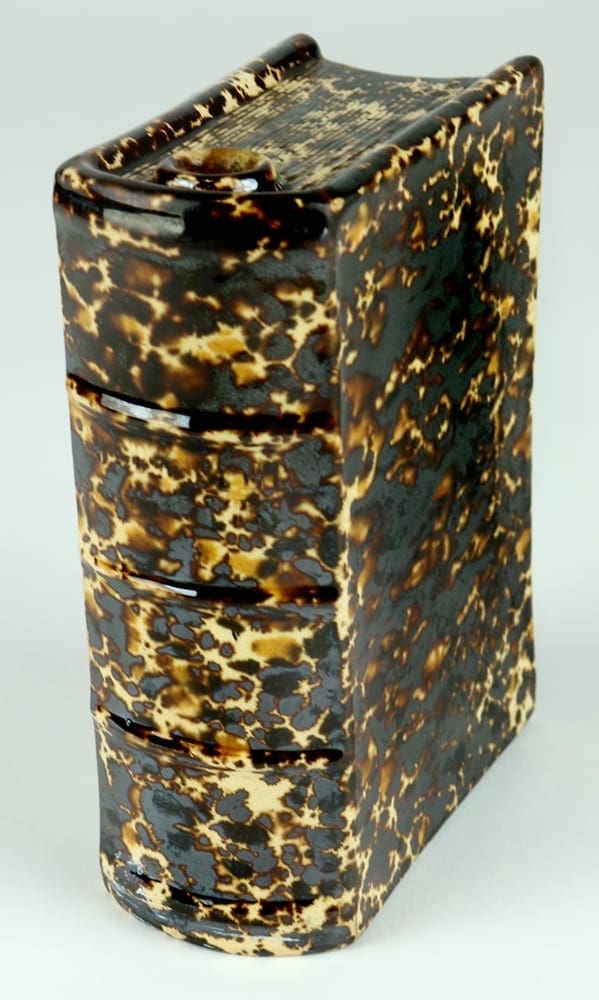Donated by Susan and Orville Hall Jr.
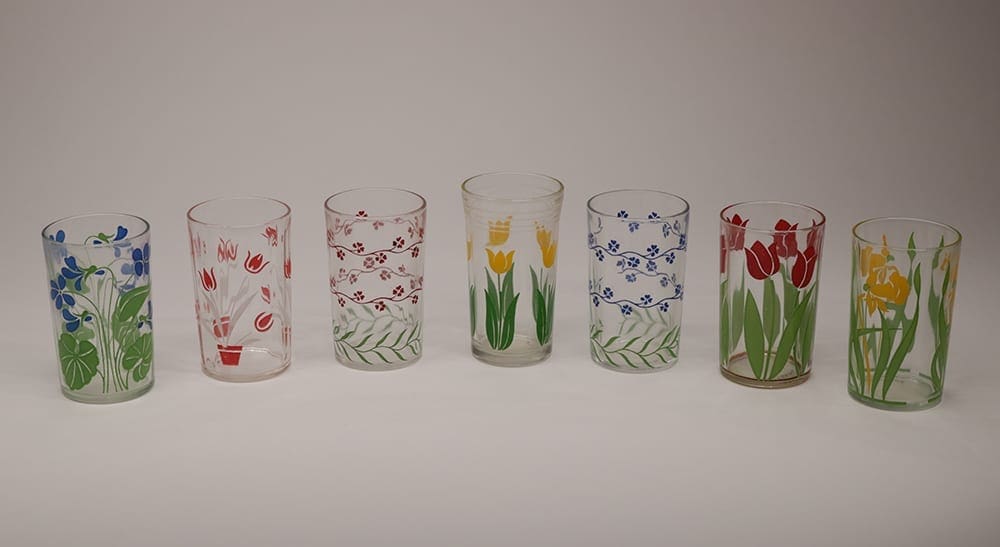 These small beverage glasses, popularly known as “Swanky Swigs,” belonged to the Orville and Janie Hall family of Fayetteville. The glasses seen here date from the 1930s through the 1950s.
These small beverage glasses, popularly known as “Swanky Swigs,” belonged to the Orville and Janie Hall family of Fayetteville. The glasses seen here date from the 1930s through the 1950s.
The term “Swanky Swig” was coined by Kraft Foods. In 1933 Kraft began offering their processed cheese spreads in reusable glass containers they called Swanky Swigs. It was a marketing strategy to encourage housewives to purchase Kraft’s products during the Great Depression, when money was tight. Once the jars were empty, they could be washed out and used as beverage glasses. The glass jars were produced by Hazel Atlas Glass Co. The first Swanky Swigs were hand painted.
More than eighteen different Swanky Swig designs were produced from the 1930s into the 1970s, including stars, solid color bands, animals, and some of the floral patterns seen here. During their heyday, Swanky Swigs were produced for markets in the United States, Canada, and Australia. The popularity of Swanky Swigs led other food companies to produce their own version of a decorated reusable glass container, but among glass collectors, the term “Swanky Swig” is used only when referring to glasses made by Kraft.
In 1974, Fayetteville’s Safeway grocery store advertised Kraft cheese spreads in Swanky Swigs: olive, pimento, olive-pimento, and pineapple cheese spreads were 49 cents each; cheese and bacon, and Old English flavored spreads were 55 cents each (Northwest Arkansas Times, November 24, 1974).


